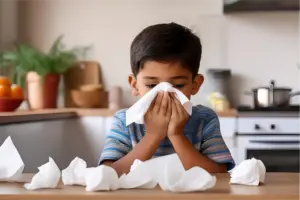
Professor K Srinath Reddy, a prominent epidemiologist and the founder president of the Public Health Foundation of India (PHFI), has provided significant insights into the recent wave of concern surrounding Human Metapneumovirus (HMPV) cases in India and around the world. Reddy, who is also a former head of the Department of Cardiology at AIIMS, shared his analysis of the situation, attributing much of the widespread panic about HMPV to the lingering trauma from the COVID-19 pandemic. According to Dr. Reddy, the fear surrounding HMPV is exaggerated, fueled by several coincidental factors that mirror the early stages of the COVID-19 outbreak. The virus’s intimidating name, the rise in cases during December (the same month COVID-19 was first reported in China), and the geographic overlap with initial COVID-19 concerns (with China being the first to report a surge in cases) have all contributed to an unwarranted level of anxiety about HMPV.
Dr. Reddy stressed that HMPV is not a new virus and has been circulating globally for over 50 years, with its recognition dating back to 2001. The virus typically causes mild, flu-like symptoms such as coughing, fever, and congestion, particularly affecting young children, the elderly, and individuals with compromised immune systems. While cases of HMPV have been on the rise in several countries, including China, Dr. Reddy explained that the World Health Organization (WHO) has clarified that these seasonal infections are within expected levels and do not indicate an impending pandemic. The WHO further emphasized that while viral infections, including HMPV, are common in the winter, HMPV is a minor contributor to the overall respiratory infections, with influenza being the predominant cause.
Addressing the issue of preventive measures, Dr. Reddy debunked the growing calls for routine mask usage to prevent HMPV infection. Unlike COVID-19, which primarily spreads through aerosols and can remain in the air for extended periods, HMPV is transmitted via respiratory droplets through close contact with an infected person or by touching contaminated surfaces. This, Dr. Reddy noted, makes masks less effective in preventing HMPV compared to their role in preventing COVID-19. Instead, Dr. Reddy advised the public to focus on simple but effective preventive measures such as regular handwashing, avoiding close contact with symptomatic individuals, and maintaining physical distance from those showing signs of respiratory illness. However, he acknowledged that masks may still be beneficial for vulnerable populations, such as the elderly or individuals with weakened immune systems, especially in crowded or poorly ventilated areas.
Dr. Reddy also took the opportunity to highlight the importance of preparing for future pandemics by adopting a comprehensive “One Health” approach. This strategy, which links human, animal, and environmental health, aims to improve surveillance systems and enhance early detection of zoonotic diseases—diseases that transfer from animals to humans. Dr. Reddy stressed that increased deforestation, climate change, and disruptions to natural ecosystems have all contributed to the rise in zoonotic infections, making it crucial to monitor health data across these sectors to better predict and mitigate outbreaks. Additionally, he emphasized the need to strengthen healthcare systems, particularly primary care, to handle potential disease outbreaks more effectively. Public education on good hygiene practices and the importance of vaccination and drug discovery infrastructure were also highlighted as essential steps to ensuring quicker responses to health threats in the future.
In summary, while the recent fears surrounding HMPV are largely driven by COVID-19 trauma and misinformation, Dr. Reddy’s comments serve as a reminder to remain calm, focus on proven prevention methods, and continue preparing for the evolving challenges posed by respiratory infections and potential pandemics.








